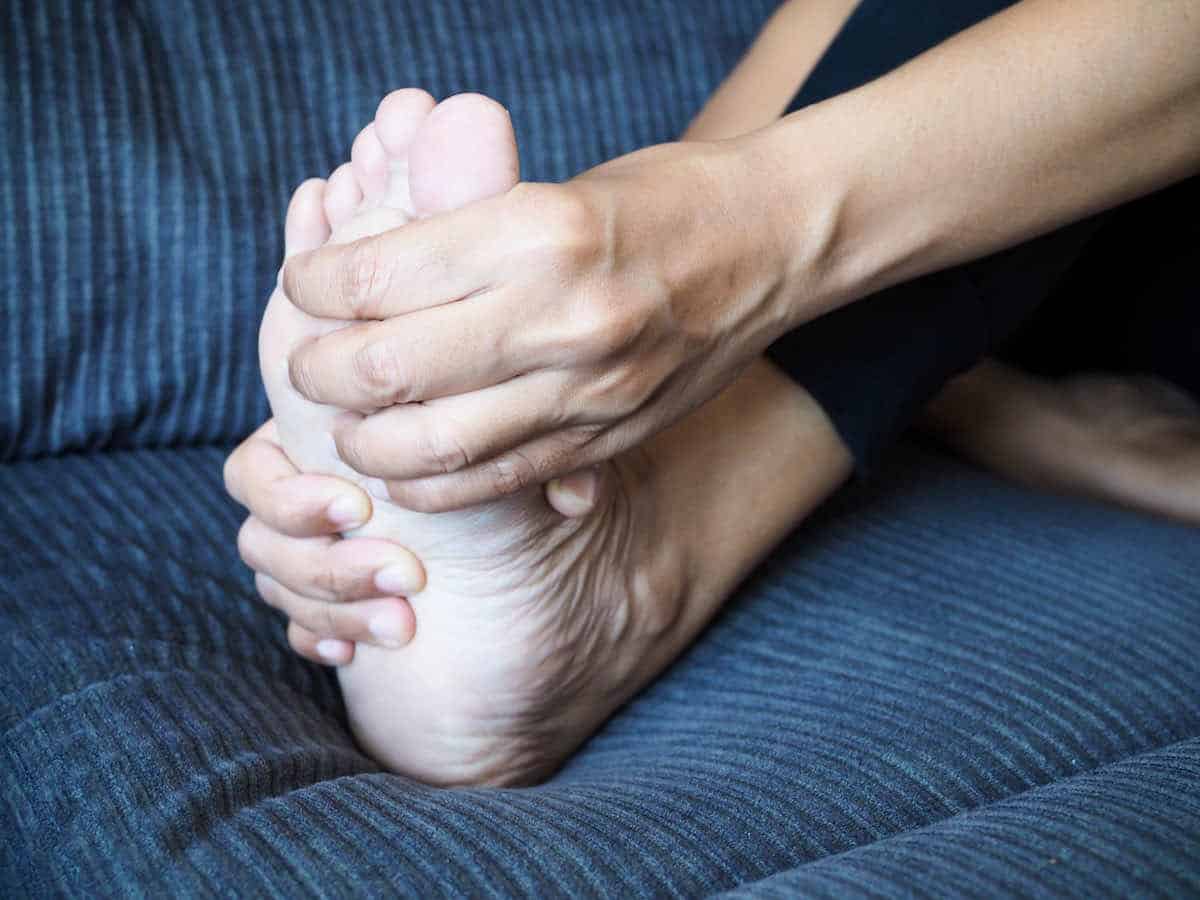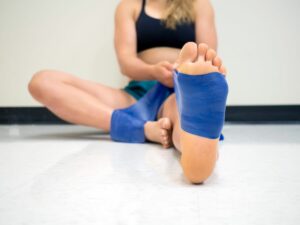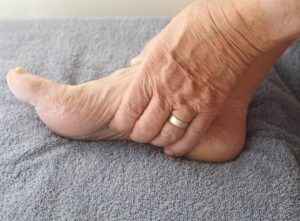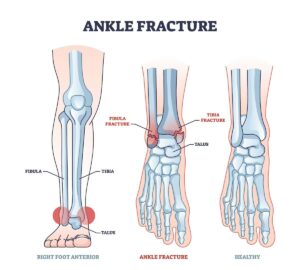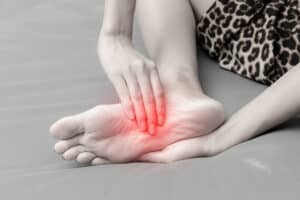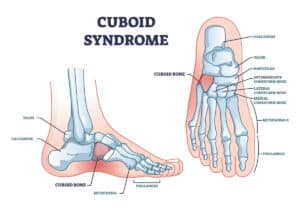Free download: Top 10 Natural & Easy Remedies for Joint Pain from Home. Learn these helpful remedies.
Estimated Reading Time: 7 minutes read
Extensor tendonitis is a problem that leads to aching on the top part of your foot. The pain is usually because the tendons, which help your toes to stretch out, become swollen. This can happen when we use our feet too much, wear shoes that don’t fit well, or keep our feet in an odd position while doing physical activities. However, there’s good news! With the right exercises and stretches, we can soothe the pain and stop it from returning.
Table of Contents
Who Does Extensor Tendonitis Affect?
Extensor tendonitis can touch anyone’s life, no matter their age or how fit they are. The main things that can cause it are how you use your feet and the kind of shoes you wear. Some people are more likely to get it because of what they do every day and their hobbies.
People who are really active or do sports that need a lot of running or jumping can get it more often. If you run, hike, or play sports that need a lot of moving around, like soccer or tennis, you put a lot of stress on your feet. This stress can make the tendons in your feet swell up, which can make them hurt – this is extensor tendonitis.
Another big thing that can cause extensor tendonitis is the type of shoes you wear. If your shoes are too tight or make your feet sit in a weird way – like high heels can – they can put too much pressure on the tendons in your feet.
If you wear these types of shoes a lot, you might end up getting extensor tendonitis without even realizing why. This is why it’s really important to pick shoes that give your feet the right kind of support and fit your feet well – doing this can lower your chances of getting extensor tendonitis.
What are the Symptoms of Extensor Tendonitis?
Extensor tendonitis presents with symptoms primarily associated with discomfort and movement limitation on the top of the foot. The severity of symptoms can vary among individuals but generally includes:
- Pain on the top of the foot: This is the most common symptom, with the intensity ranging from mild to severe.
- Increased pain during foot movement: The discomfort often intensifies when moving the foot or flexing the toes.
- Swelling and bruising: These may be present, indicating inflammation or trauma to the tendons.
- Difficulty in foot movement: In more severe cases, lifting or moving the foot may become challenging. If these symptoms persist or worsen over time, it is crucial to consult a healthcare professional.
How to Prevent Extensor Tendonitis
Preventing extensor tendonitis involves a combination of mindful habits and preventative measures that can reduce the likelihood of experiencing this condition. Below are some key prevention strategies:
- Choose the Right Footwear: Opt for shoes that fit well and support your feet. The wrong shoes can lead to unnatural foot positions, causing strain on the tendons.
- Rest and Recovery: Allow adequate recovery time between high-impact activities to prevent overuse and strain of the extensor tendons.
- Strengthening Exercises: Regularly perform exercises that strengthen the foot and leg muscles. This can help protect the tendons from excessive stress.
- Orthotic Insoles for High Arches: If you have high arches, consider wearing orthotic insoles. These can help distribute pressure evenly across the foot when walking or running, reducing the strain on the extensor tendons.
Recommended Exercises and Stretches
To alleviate pain and prevent extensor tendonitis, here are some exercises and stretches:
1. Ankle ABCs
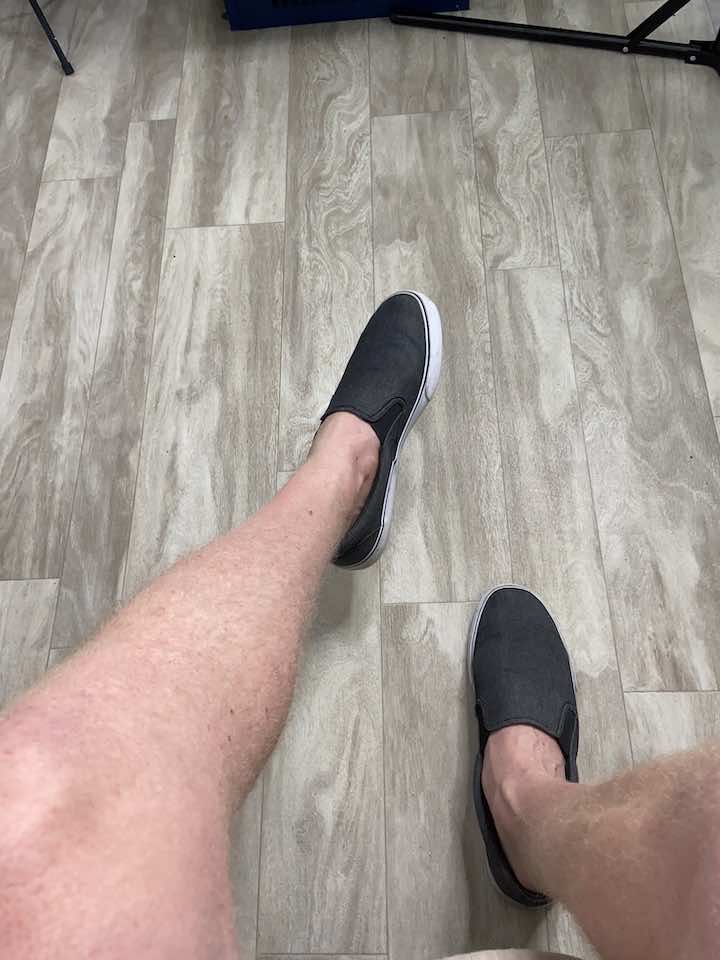
- Start by sitting in a chair or laying in bed with your ankle over the edge to allow for full ankle movement.
- Write out each letter of the alphabet with just your ankle as though your big toe is a pencil.
Note: You will not have big movements, so many of us start to move our entire leg to write out the letters. Try just to move your ankle and keep your leg still.
2. Foot Extensor Stretch
- Begin by standing and holding onto a stable surface for support, or sit in a chair.
- Position your foot with the top of your toes touching the floor.
- Straighten your ankle, and gently curl your toes under your foot, elongating the top of your ankle.
- Maintain this stretch for 30 seconds.
- Repeat the stretch for a total of three times.
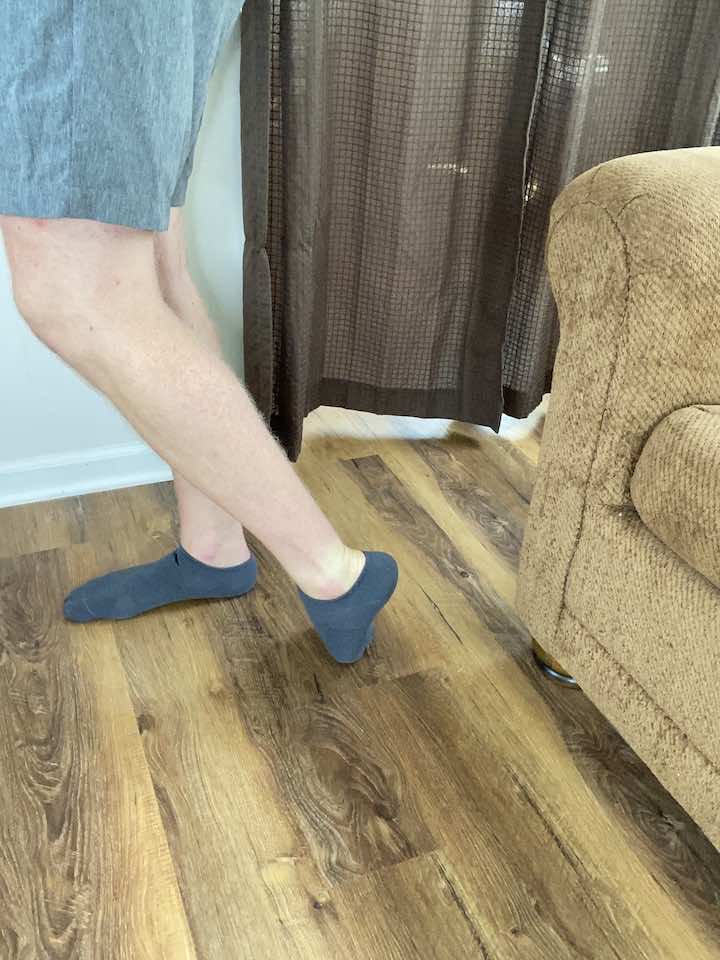
3. Marble Pick-Ups
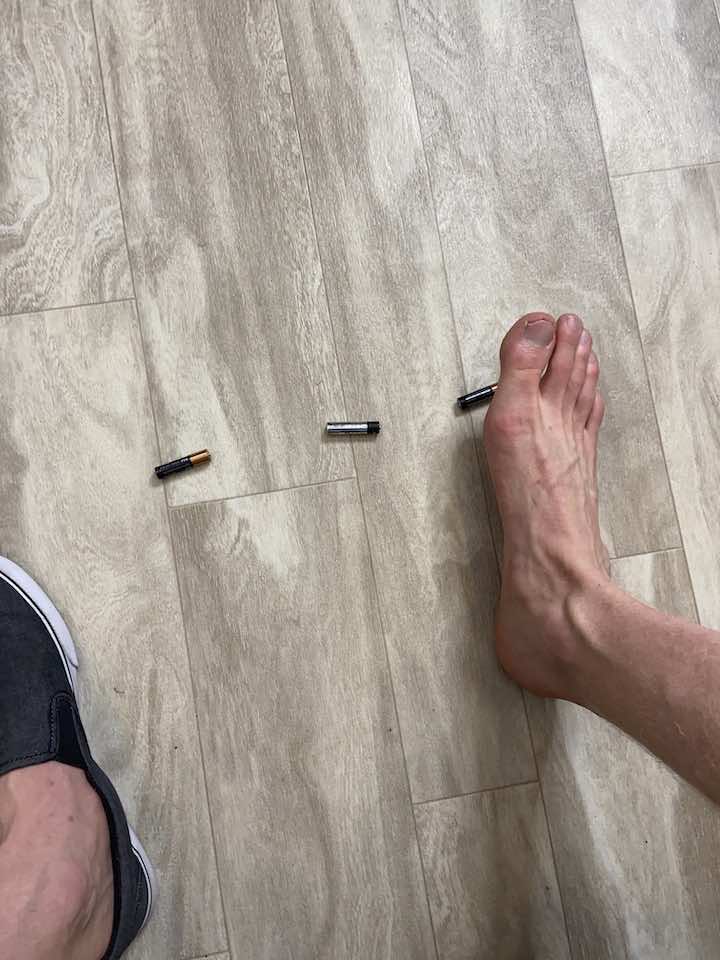
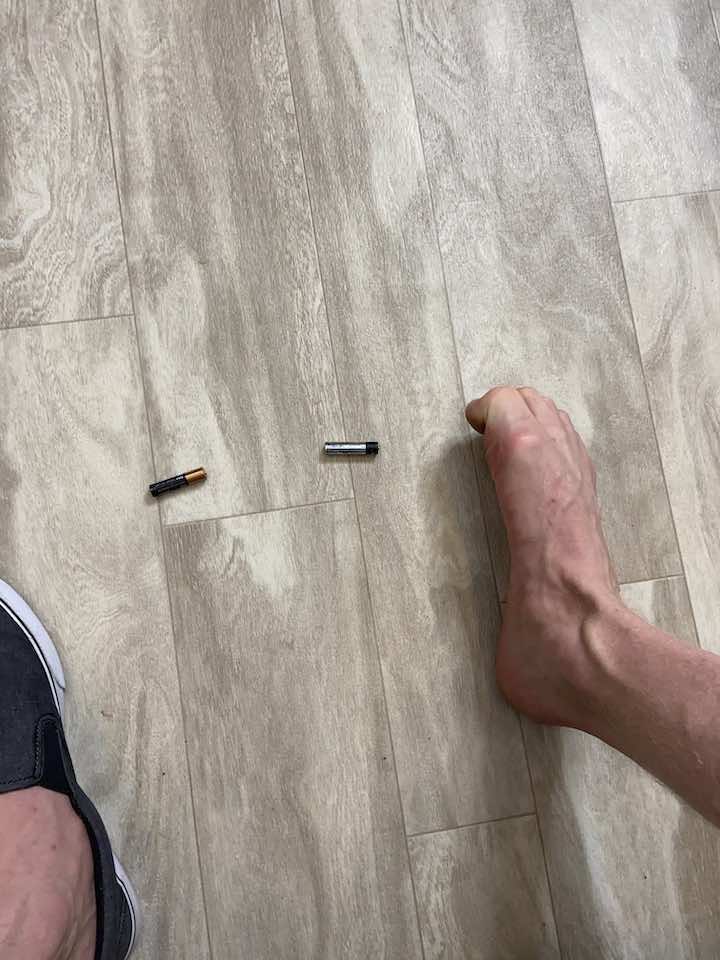
- Get 10-20 marbles and place them on the floor with a cup next to your pile of marbles.
- Stand up and hold onto a steady surface like a counter to help with balance.
- Then in standing, grab a marble with your toes and lift it into the cup. Picking up marbles can be challenging, but the great thing is that even just trying to pick up the marble will strengthen your foot!
4. Arch Lifts
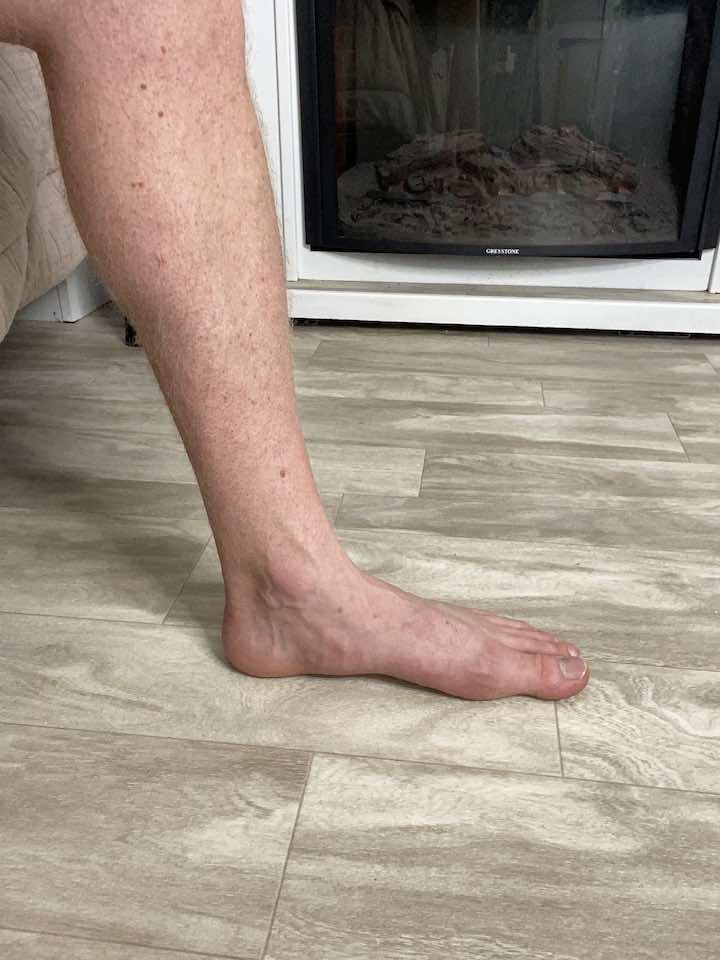
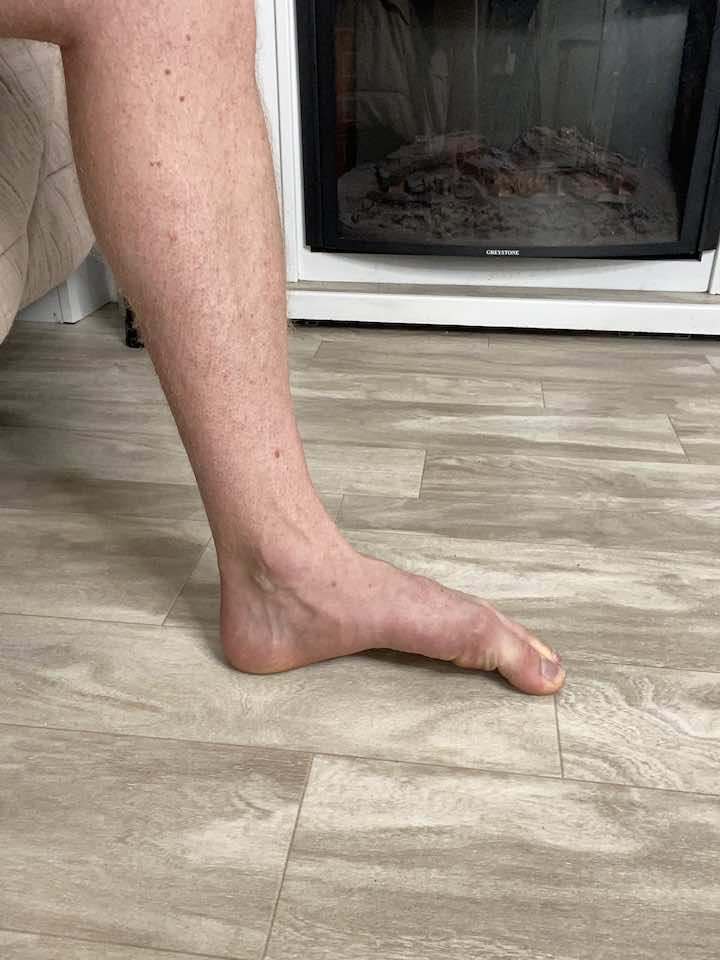
- Sit with your bare foot flat on the floor and relax your toes.
- Keep your toes as relaxed as possible, and pull the ball of your foot towards your heel as if trying to lift your arch.
- Repeat the movement for three sets of ten repetitions.
Note: The foot may only move a little during this exercise, but this is normal and expected
5. Ankle Dorsiflexion with Resistance Band
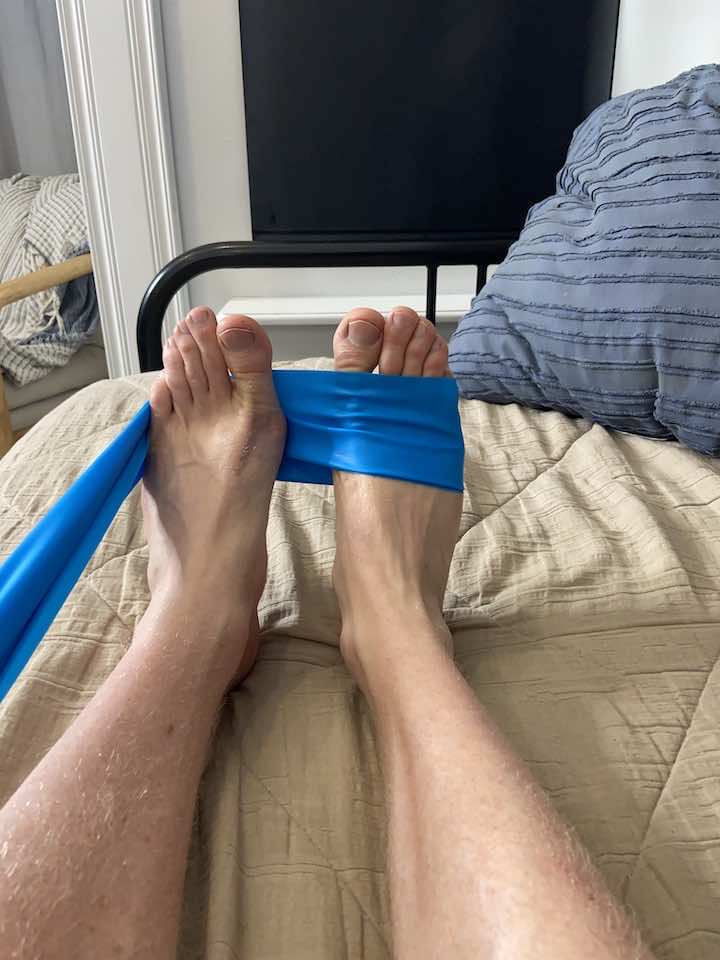
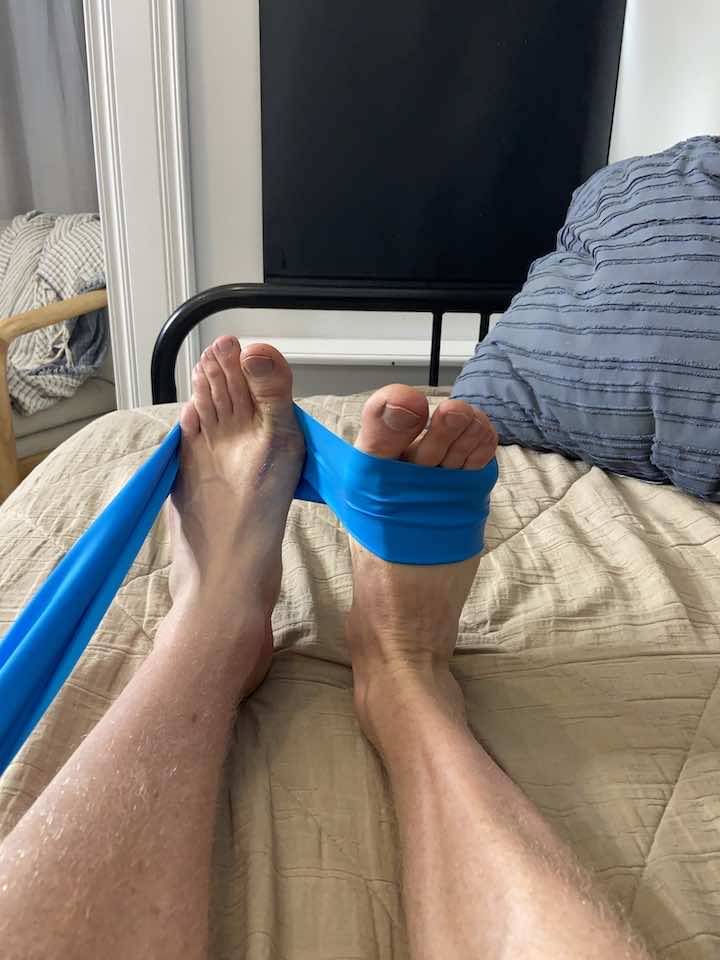
- Lay down on your bed with your ankle off the end.
- Loop the band around your right foot and loop the band around your left foot.
- Point your left foot and hold that position.
- Draw your right foot up like you’re trying to bring your toes to your nose, then relax. Finish the set, then repeat with your left foot.
- Repeat 10 repetitions for 3 sets.
6. Ankle Plantarflexion with a Resistance Band
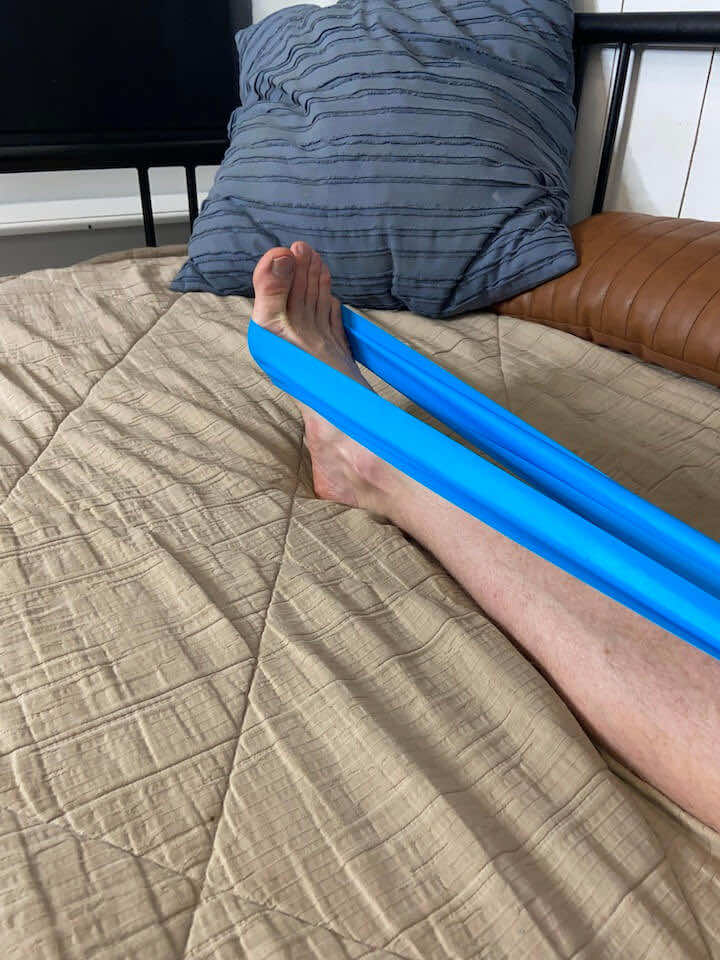
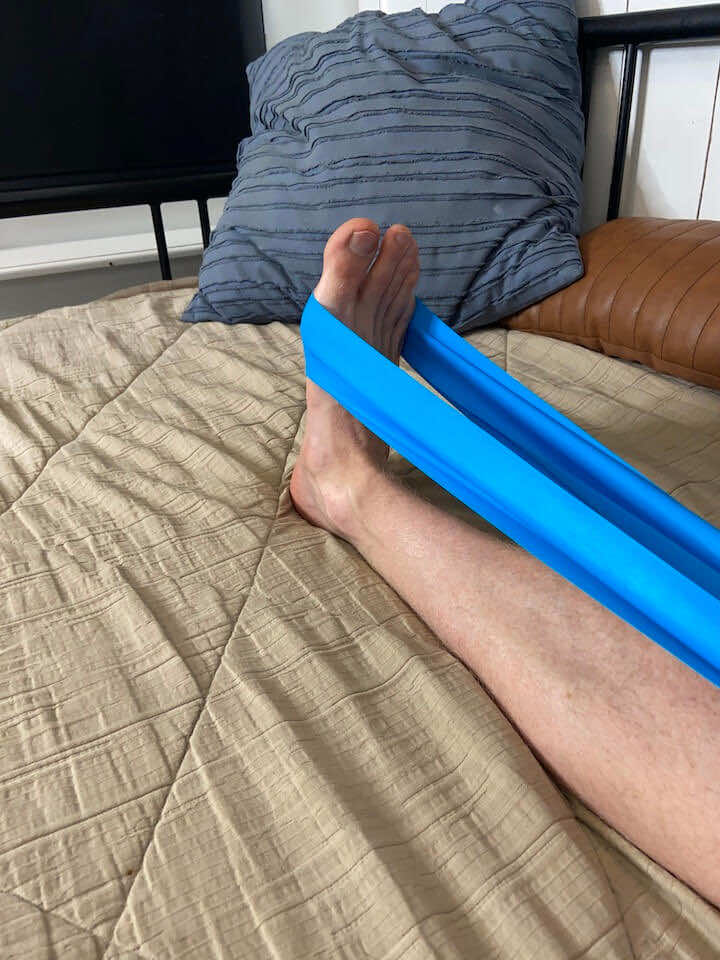
- Lay down on your bed with your ankle off the end.
- Loop the band around your right foot and hold onto the other end of the band with your hands.
- Point your toes and squeeze the back of your calf muscles, then relax. Finish the set, then repeat with your left foot.
- Repeat 10 repetitions for 3 sets.
7. Ankle Inversion with Resistance Band
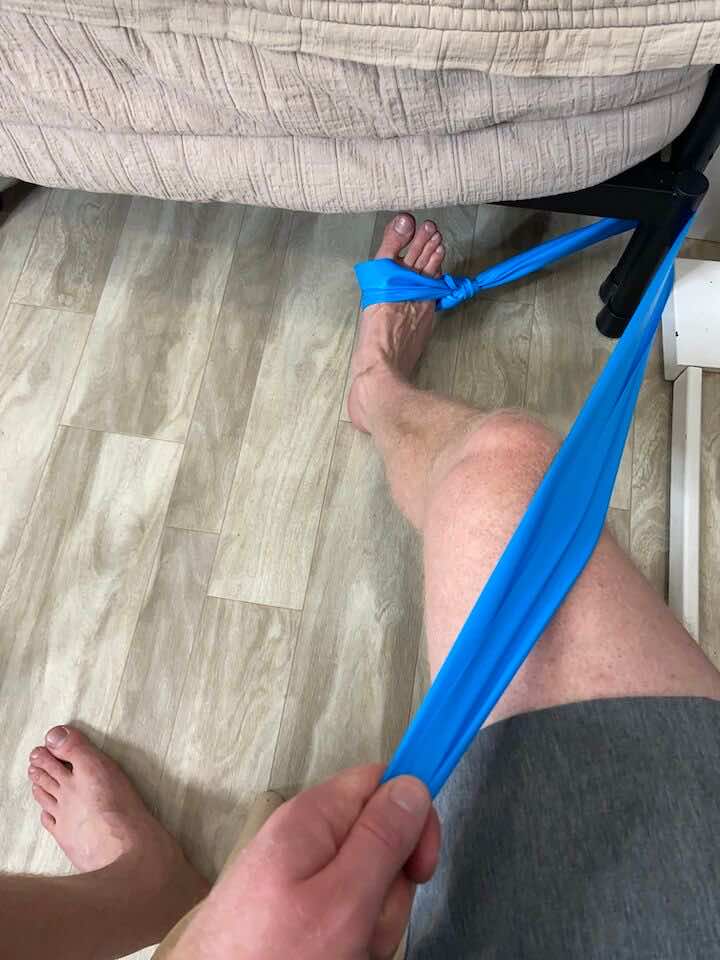
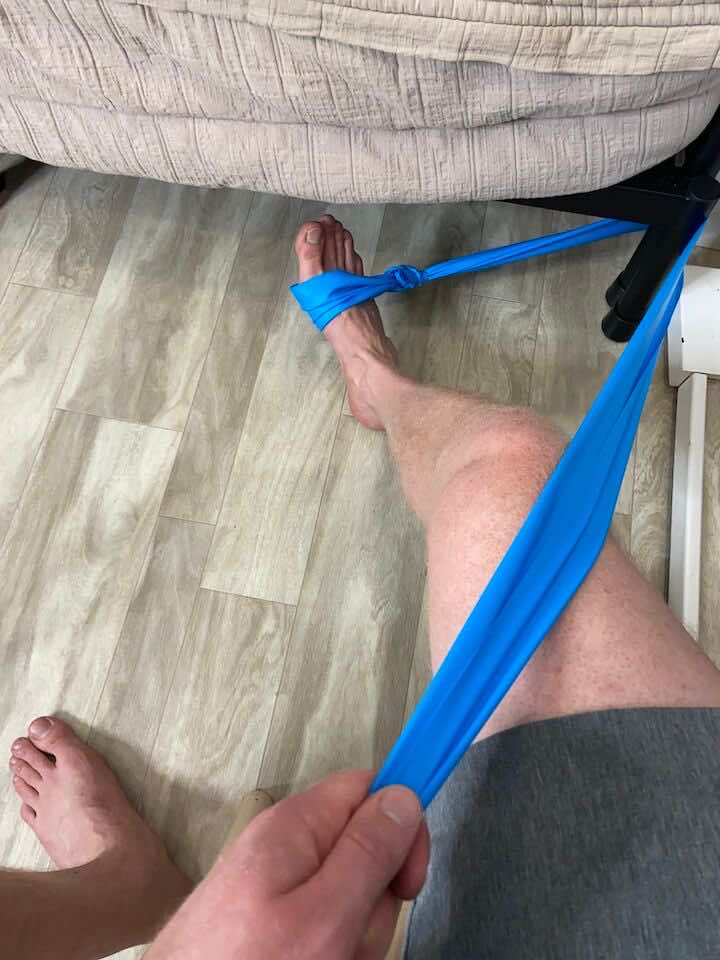
- Sit near a heavy table or sturdy chair that won’t move easily.
- Bring your foot in like you’re angling your ankle toward your other foot, squeeze in, then relax. Loop the resistance band over your foot and around the table or chair leg, as shown in the graphic above.
- Repeat this movement for 10 reps, and do a total of 3 sets.
8. Ankle Eversion with Resistance Band
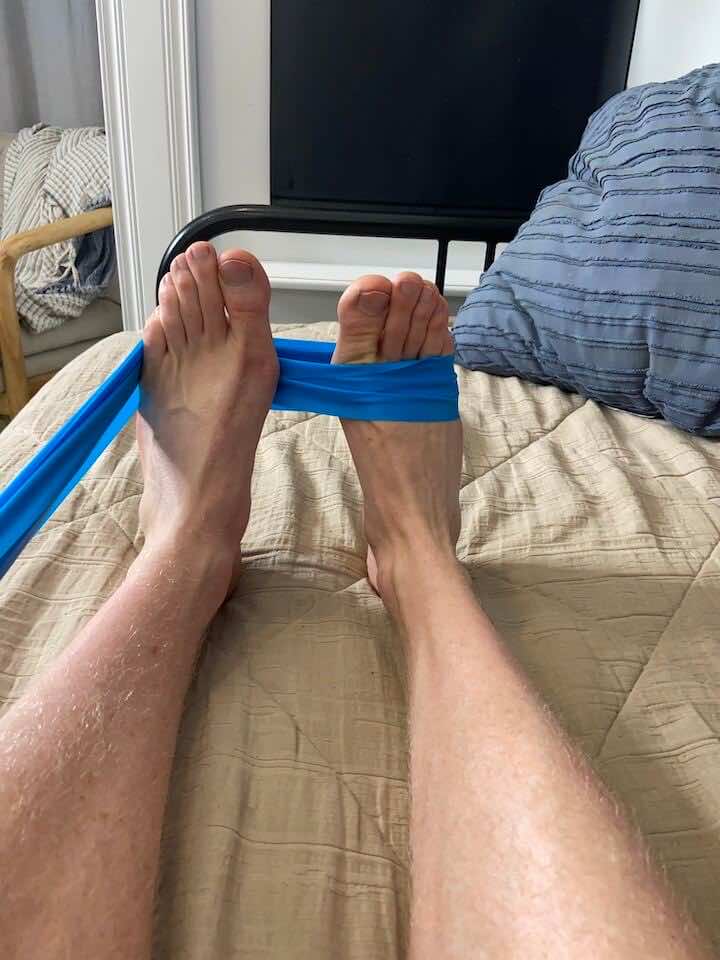
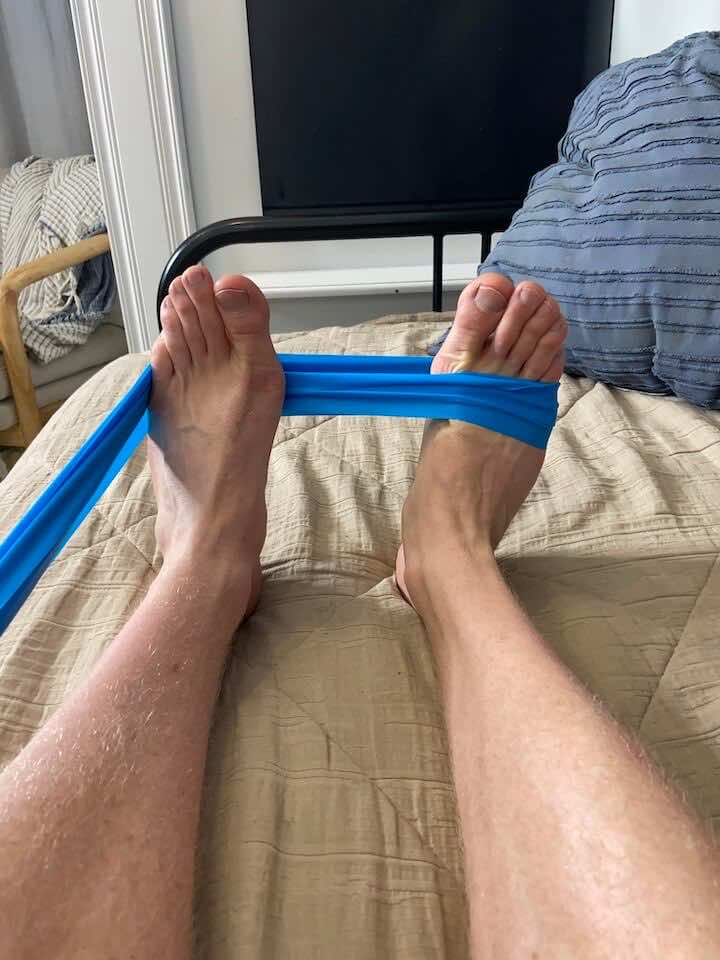
- Lay down on your bed with your ankle off the end.
- Loop the band around your right foot and around your left, as seen in the graphic. We’re going to use your left foot as an anchor for your right foot as your exercise.
- Bring your right foot out like you’re angling your ankle away from your left foot, squeeze in, then relax.
- Do this for 10 repetitions and complete 3 sets in total.
Tip: Work on just moving your ankle and not your entire leg when performing this exercise! See if your knee rolls out at all; try to keep it still.
Conclusion
Consistency is vital when managing and recovering from extensor tendonitis. A regular routine of recommended exercises and stretches can help reduce discomfort associated with this condition.
Always consult with a healthcare provider before beginning any new exercise regimen, especially if you’re dealing with extensor tendonitis. Remember, your feet are your foundation. By taking good care of them, you ensure your mobility and overall well-being.


